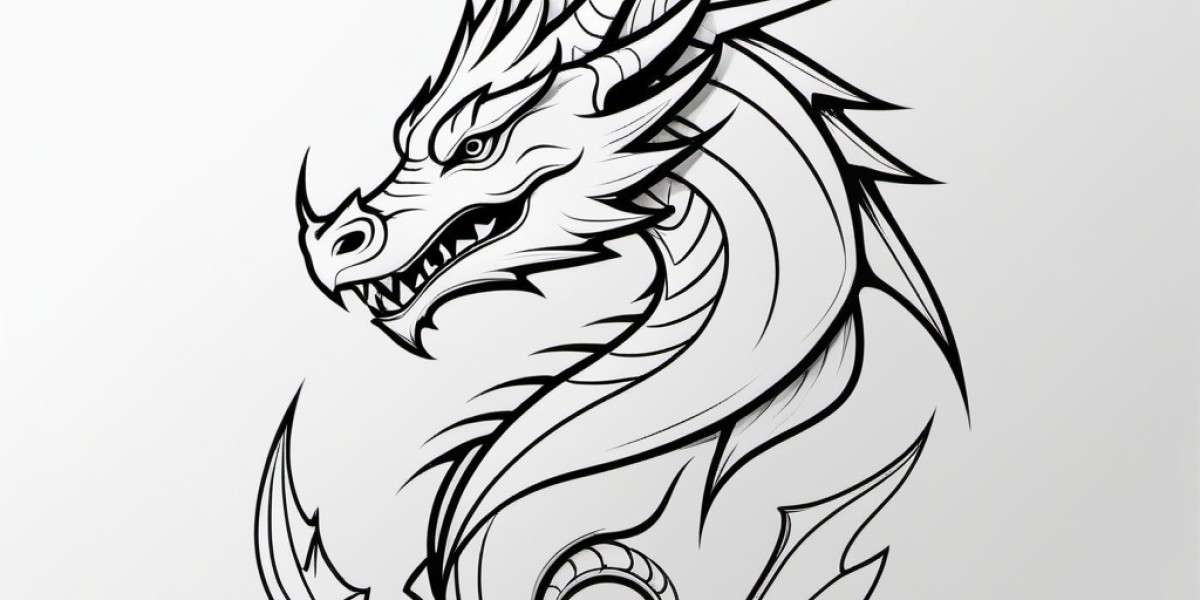The dragon is one of the most enduring and powerful symbols in human history, transcending cultures, myths, and belief systems. Its representation has ranged from fearsome monsters to wise and benevolent creatures, but across all interpretations, the dragon remains a powerful symbol of strength, mystery, and transformation. This article explores the dragon symbol, its origins, meanings, and how it has been interpreted across different cultures.
Origins and Evolution of the dragon symbol
The dragon is not just one mythical creature but a broad category of creatures that have appeared in various forms across many cultures. Its earliest appearances date back to ancient civilizations, including Mesopotamia, Egypt, and China. Though dragons often have similar characteristics—large serpentine bodies, sharp claws, and sometimes wings or the ability to breathe fire—their meanings and roles differ widely depending on the culture.
In some cultures, the dragon is a revered and divine figure, while in others, it represents chaos, evil, or destruction. The origins of the dragon symbol are often traced back to ancient human encounters with real creatures such as crocodiles, snakes, and large predatory animals, which were often mythologized over time. The dragon, in essence, bridges the gap between the real and the supernatural, representing nature's raw power.
The Dragon in Eastern Cultures: A Symbol of Power and Protection
In Eastern cultures, particularly in China, Japan, and Korea, the dragon is predominantly seen as a positive force and a symbol of power, protection, and wisdom. The Chinese dragon, with its long serpentine body and antler-like horns, is one of the most famous and revered symbols in Chinese culture. Unlike the fire-breathing monsters of Western mythology, the Chinese dragon is associated with water, rainfall, and agriculture. It is often seen as a benevolent force that controls rivers and oceans, bringing prosperity and balance to the land.
In China, the dragon also has strong ties to the imperial family. The emperor was often referred to as the “Son of the Dragon,” and the creature became a symbol of imperial authority and divine right to rule. It is not just a symbol of strength but also a protector of the land, a guardian of the natural order.
Similarly, in Japan, the dragon (ryu or tatsu) is revered as a water deity, often depicted as a protector of sacred places like mountains and temples. The Japanese dragon symbolizes wisdom and spiritual strength, and in some myths, it is believed to possess the ability to shape-shift or control the forces of nature. Korean dragons share these associations, serving as symbols of success and guardianship.
The Dragon in Western Cultures: Chaos and Heroism
In contrast to the Eastern view of dragons, Western cultures have traditionally seen the dragon as a destructive and chaotic force. Dragons in European mythology are often portrayed as fire-breathing creatures that hoard treasure and abduct princesses. These dragons represent obstacles or evils that heroes must overcome in their quests, serving as symbols of sin, temptation, and moral corruption.
One of the most famous Western dragon stories is that of Saint George and the Dragon, in which the Christian knight Saint George slays a dragon that symbolizes evil. In this narrative, the dragon is an embodiment of sin and chaos, and the hero’s triumph represents the victory of good over evil. In Christian iconography, dragons are often associated with Satan and the forces of darkness, further cementing their role as symbols of destruction.
However, not all Western depictions of dragons are entirely negative. In more modern interpretations, dragons can symbolize personal power and inner strength, such as in J.R.R. Tolkien’s The Hobbit, where the dragon Smaug hoards treasure. Smaug is a symbol of greed and corruption, and the challenge of confronting him represents personal growth, the desire to resist temptation, and the pursuit of wisdom.
The Dragon as a Symbol of Transformation
Beyond its roles as a creature of chaos or protector, the dragon has also come to represent transformation, regeneration, and personal growth. In many cultures, dragons are seen as creatures that undergo constant change or evolution. This idea of metamorphosis is central to the dragon’s symbolism, as it suggests that through overcoming challenges and trials, individuals can experience growth and transformation.
In Chinese astrology, the dragon is one of the twelve zodiac animals, symbolizing strength, vitality, and good fortune. People born under the sign of the dragon are thought to possess qualities such as courage, leadership, and resilience. Similarly, in many mythologies, dragons undergo cycles of death and rebirth, shedding old skin or emerging from the earth as new, more powerful beings. This represents both physical and spiritual renewal, emphasizing the idea of overcoming obstacles to achieve self-improvement.
In modern-day culture, the dragon is often associated with personal empowerment. Its symbolism extends to the idea of shedding old limitations and embracing one’s potential. The dragon is seen as a guide for those embarking on journeys of self-discovery and inner transformation.
The Dragon in Contemporary Culture
The dragon continues to be a prominent symbol in modern culture, especially in literature, film, and popular media. From the wise dragons in How to Train Your Dragon to the fearsome creatures in Game of Thrones, dragons are often depicted as beings of immense power, knowledge, and mystery. In many contemporary portrayals, dragons are complex characters with their own motives and personalities, representing not only physical strength but also wisdom and understanding.
In the world of fantasy literature, dragons often symbolize the untamed forces of nature or the desire for personal growth. They are no longer just threats to be vanquished, but are seen as powerful allies, guides, or challenges that the protagonist must face in order to grow. In films and games, dragons continue to represent the clash between good and evil, but they are also seen as symbols of freedom, independence, and the ability to transcend limits.
Conclusion
The dragon symbol is one of the most enduring and versatile symbols in human history. Whether viewed as a force of destruction, a protector of sacred places, or a metaphor for personal transformation, the dragon continues to captivate our imaginations. Its multifaceted nature, representing both light and dark aspects of existence, makes it a timeless symbol of power, mystery, and the potential for change. From ancient myths to modern media, the dragon remains an icon that reflects humanity’s desire for strength, wisdom, and the ability to overcome the forces of chaos.









